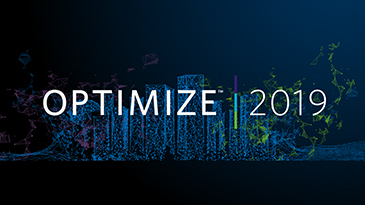Sustainability weaved a subtle but steady thread through the three days of OPTIMIZE 2019 this May in Houston. With 300 companies from 50 countries at OPTIMIZE (and representatives from many of them presenting), much of the interesting sustainability-related content turned out to come from companies in Asia, the Middle East and Latin America. These organizations are showing both innovative thinking and rapid implementation.
Companies from North America and Europe, some of which have been industry leaders in promoting industry support for global sustainability, are still talking about the topic. But interestingly, at this year’s event, it was the rest of world that was “walking the walk” most actively.
Improving Energy Efficiency and Air Quality in India
From India, where both energy supply and water are huge regional issues, Bharat Petroleum (BPCL) provided an interesting perspective on how Asian companies in general, and South Asian companies in particular, are thinking about the digital refinery. BPCL’s Priya Bhagwhat and Rama Rao explained that the company’s vision for the future leads with the goal of being a “role model for environment, health and safety performance, to be well accepted and respected by the community.” It follows with the further goal of being “the greatest place to work.”
These ideas are squarely at the core of the global drive for sustainability, and they are at the core of BPCL’s digital journey. The “sustainable enterprise” is about not only environmental and safety performance, but also about being a sustainable enterprise in terms of meeting the needs of the “whole worker.”
One of the strategic projects that has formed part of the first year of BPCL’s digital initiative is the implementation of an integrated online digital twin to improve and optimize the Mumbai refinery sulfur-recovery operations. Sulfur recovery is both a big consumer of energy (often inefficiently) and a creator of SOX environmental pollutants.
BPCL, along with their implementor Helium, put this advanced digital twin online in about six months, and they have already seen significant reduction in energy used: 90% reduction in sulfur emissions, plus improved economics in reselling the reclaimed sulfur.
BPCL also presented a second project in their digital journey, another digital twin. This one digitally mirrors over 20 heat exchangers in a crude reactor train, and it has also resulted in significant energy savings and improved asset integrity. (We’ll have more details on the scope of these digital twins and how they create value in an upcoming blog later this spring.)
Conserving Energy and Water in the Middle East
From the Middle East, where water conservation is always a priority, Abu Dhabi National Oil Company (ADNOC), together with their implementation partner Equinox from India, presented a leading-edge digital twin implementation, this one on a larger scale.
ADNOC has been a thought leader in the world energy community, emphasizing to their sister companies the industry’s responsibility to demonstrate not only commitment, but also action, on sustainability. This project is evidence of that commitment to action.
ADNOC implemented a comprehensive digital twin of their Shah gas facility, which handles around 1 billion cubic feet per day, or around 10% of ADNOC’s total gas production. They created a three-tier digital twin, modeling their use of process heat, the cost and use of utilities (including energy and water) and an overall digital model tracking all materials flowing through the plant.
What makes this effort stand out as an example is the well-conceived used of dashboards, so that all key workers in the gas plant immediately see the impacts of their operating decisions on energy use and cost, water use and the loss of gas in the system. In the several months that the digital twin has been in operation, it has already resulted in reductions in energy use and water use, as well as a 1% reduction in lost gas, which had been emitted to the atmosphere.
Launching Environmental and Talent Initiatives in Latin America
Moving to Latin America, where Brazil has always pursued a multi-source energy strategy, Brazil’s Braskem presented a smaller-scope but high-impact digital twin implementation, which helped them resolve major energy wastage in their ethylene furnace operations.
As presenter Admar Bueno explained, the development of a rigorous virtual model, both in design and operating mode, of the main energy consumer in their process enabled them to understand exactly how the system was behaving and identify good options to reduce energy use. This has already led to an 85% reduction in energy losses, while significantly reducing water use and improving carbon footprint.
It’s also worth mentioning an interesting presentation by DeNovo, a new and innovative upstream company that just opened its first gas field in Trinidad. DeNovo has a strong vision of employing technology to compete successfully against larger international operators and run safe, state-of-the-art upstream facilities. But perhaps equally important, they do this all with homegrown talent from Trinidad.
DeNovo provides an excellent and self-sufficient environment that taps into the potential of local talent and helps that talent grow, thereby acting as a sustainable partner to their developing country. Richard Shepherd presented DeNovo’s vision, showing how they have employed technology to accomplish production at an accelerated speed, profitably, in a field previously abandoned by international energy players.
These are just four of the interesting examples we saw at OPTIMIZE 2019. There were many more were, including several by U.S.-based players. These cases show that digitalization technologies are the key enabler for the process industries to move towards an urgently needed, active role in global sustainability initiatives.
To learn how companies are positioning themselves to thrive in a market that demands safe and sustainable practices, check out the new executive brief Next-Generation Operational Technologies Enable the Smart Enterprise in a Changing World.






Leave A Comment